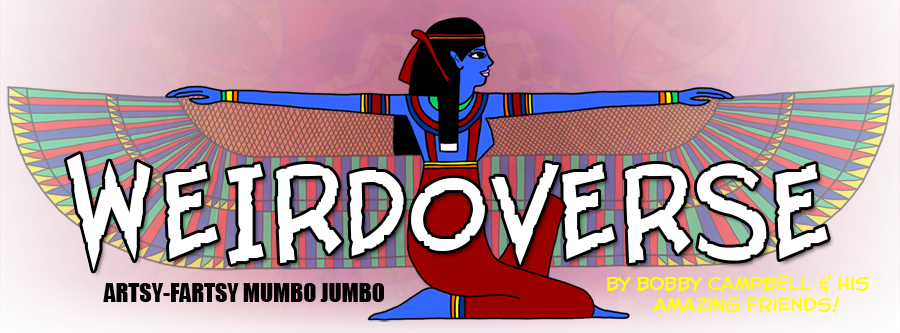Category Archives: JEEMS JOKES
HAPPY BLOOMSDAY 2023
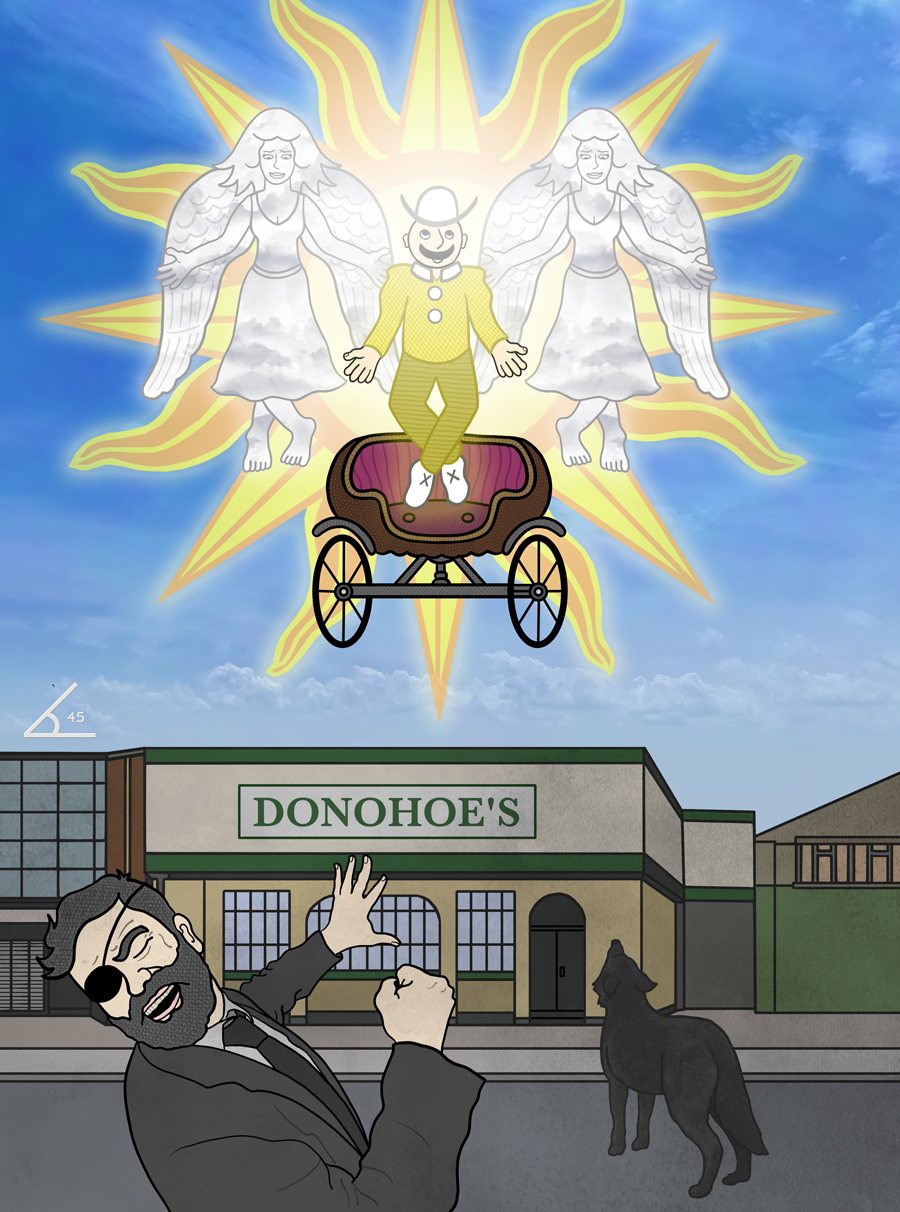
“When, lo, there came about them all a great brightness and they beheld the chariot wherein He stood ascend to heaven. And they beheld Him in the chariot, clothed upon in the glory of the brightness, having raiment as of the sun, fair as the moon and terrible that for awe they durst not look upon Him. And there came a voice out of heaven, calling: Elijah! Elijah! And he answered with a main cry: Abba! Adonai! And they beheld Him even Him, ben Bloom Elijah, amid clouds of angels ascend to the glory of the brightness at an angle of fortyfive degrees over Donohoe’s in Little Green street like a shot off a shovel.”
– JAMES JOYCE, ULYSSES
(Illustration is a redux version of my BLOOMSDAY 2012 drawing)
How James Joyce inspired Star Wars
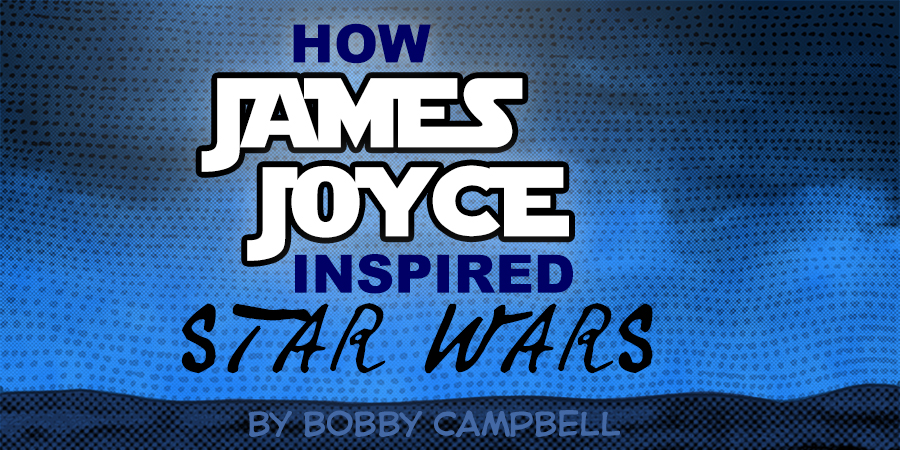
This is a fairly easy observation to make, but I’ve never seen anyone else connect these particular dots, and so here’s How James Joyce Inspired Star Wars.
It’s a well known piece of trivia that George Lucas borrowed from Joseph Campbell’s book The Hero With a Thousand Faces while composing the story of the original Star Wars movie. Luke follows the archetypal Hero’s Journey that Campbell outlined in his book. Though then another well known piece of trivia is that Joseph Campbell borrowed from James Joyce’s book Finnegans Wake while developing the structure of The Hero With a Thousand Faces. Campbell’s concept of the Hero’s Journey was inspired by Joyce’s monomyth. There is thus a direct line of influence from Joyce’s Finnegans Wake to Campbell’s Hero w/ a Thousand Faces to Lucas’ Star Wars.
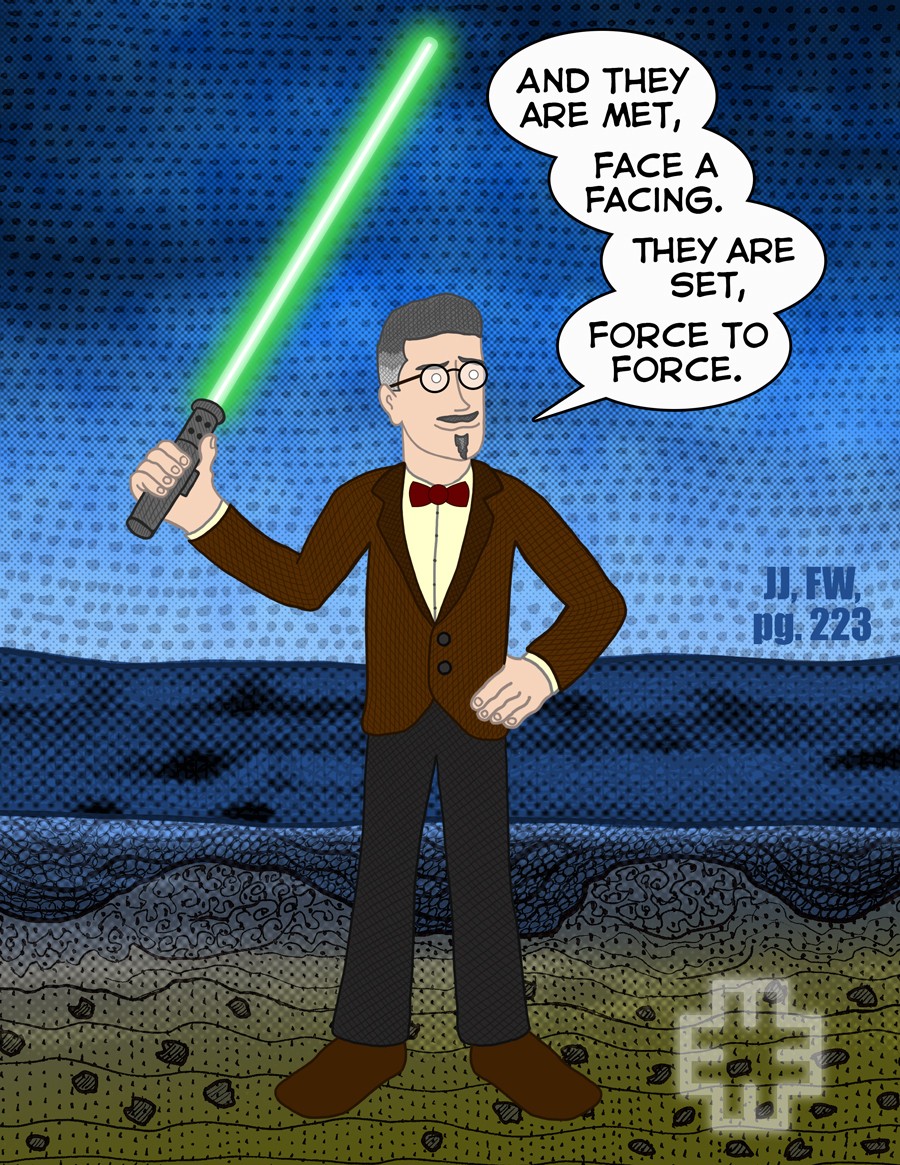
Not that there are all that many recognizably Joycean elements in Star Wars, but there does remain the general theme of common people contending against oppression while on a mythic journey of self discovery. What is it that the Finnegans are supposed to do once they awaken? Why they begin to rebel against the empire of course! In Finnegans Wake nothing ever means only one thing, but a particularly interesting interpretation, offered by Joyce himself, suggests the title is a warning to the ruling classes that the oppressed rise, eventually, in every historical cycle. That is, the Jedi always return.
The 7th installment of the Star Wars saga includes 2 potential high-profile references to the monomythic source material. The episode title The Force Awakens is a pretty simple jump from Finnegans Wake, and it’s an even smaller leap of logic to Finn, the stormtrooper turned rebel hero. Of course, these may be merely coincidental creative decisions, or worse yet, perhaps memetic synchronicity is an emergent, and especially nerdy, property of complex narrative systems :)))
The Rorschach test like aesthetic of Finnegans Wake’s holographic prose pretty much guarantees that you can find any number of Proto-Star-Warsian elements buried within, depending on how hard you are willing to look for them. For example: “right glad we never shall forget, thoh the dayses gone still they loves young dreams and old Luke with his kingly leer, so wellworth watching” (JJ, FW, Pg 398).
I couldn’t agree more!

Also, This telephone game of inspiration reminds me of my other fav second gen iteration: Robert Anton Wilson & Robert Shea’s Illuminatus! trilogy influenced Grant Morrison’s Invisibles which influenced The Wachowski’s Matrix trilogy. Though then of course Finnegans Wake was a huge influence on the Illuminatus! trilogy to begin with, and so it goes for what Terence McKenna called the quintessential artwork of the 20th century.
If you’re interested in diving into Finnegans Wake, without the commitment of contending with that impossible sea of textual mish-moshing, I heartily recommend WAYWORDS AND MEANSIGNS
A free unabridged musical version of James Joyce’s Finnegans Wake created by a collaborative collective of intrepid Joyceans. Surf’s up!
A Joycean Jinx!

The sensationalistic tabloid story of Robert Durst, which regularly re-surfaced on print and digital front pages the world round, reached its most ludicrous form in a documentary called “The Jinx: The Life and Deaths of Robert Durst.” (Bear with me on this!)
If you’re unfamiliar with the story, in short, what happened was an extremely rich man’s wife disappeared under mysterious circumstances in the 1980’s, then a close friend of his (Susan Berman) was murdered 2 decades later when she was about to be questioned about the wife’s disappearance, and then he admittedly killed and dismembered a neighbor, but successfully claimed self defense. He was generally regarded as having gotten away with at least 3 murders.
He then agrees to participate in a documentary about himself, proclaiming his innocence and bad luck coincidence throughout, which aired to great interest, and concluded by bringing about new evidence, resulting in his arrest.
What was the new evidence? A misspelled word.
After Susan Berman was killed an anonymous letter was sent to the police informing them of the body’s location.
In the anonymous letter, presumably sent by the killer, Beverly Hills is misspelled as “Beverley Hills.”
The documentary crew then discovers a letter that Durst sent to Berman with the exact same misspelling and indistinguishable handwriting.
The documentary crew confronts Durst about this, and he appears to have strange involuntary reactions, all while still maintaining his innocence and bad luck coincidence. And then in a truth is stranger than fiction moment, Durst excuses himself to the bathroom, and forgetting that he is still wearing a microphone, engages in what sounds like a pathological rambling confession.
But it’s really the misspelled word that’s the more concrete evidence, and doesn’t this scenario sound familiar to ye Joyceans?
The Phoenix Park murders of 1882, which features prominently in the dreamscape of Finnegans Wake, along with the attempt of Richard Piggott to frame Charles Stewart Parnell as being involved in and/or supportive of the murders via a series of forged letters.
Parnell was cleared of the charges because Piggott’s misspelling of the word hesitancy as “hesitency” identified him as the author of the letters.
Joyce makes much of this incident and the theme recurs throughout the book, playing into the ambiguity of HCE’s guilt/innocence of the indistinct crime he is accused of.
Curious that in both cases of forensic linguistics it was the letter “e” that did the trick.
So it goes, around and around and around again.
CHERRY ISLAND
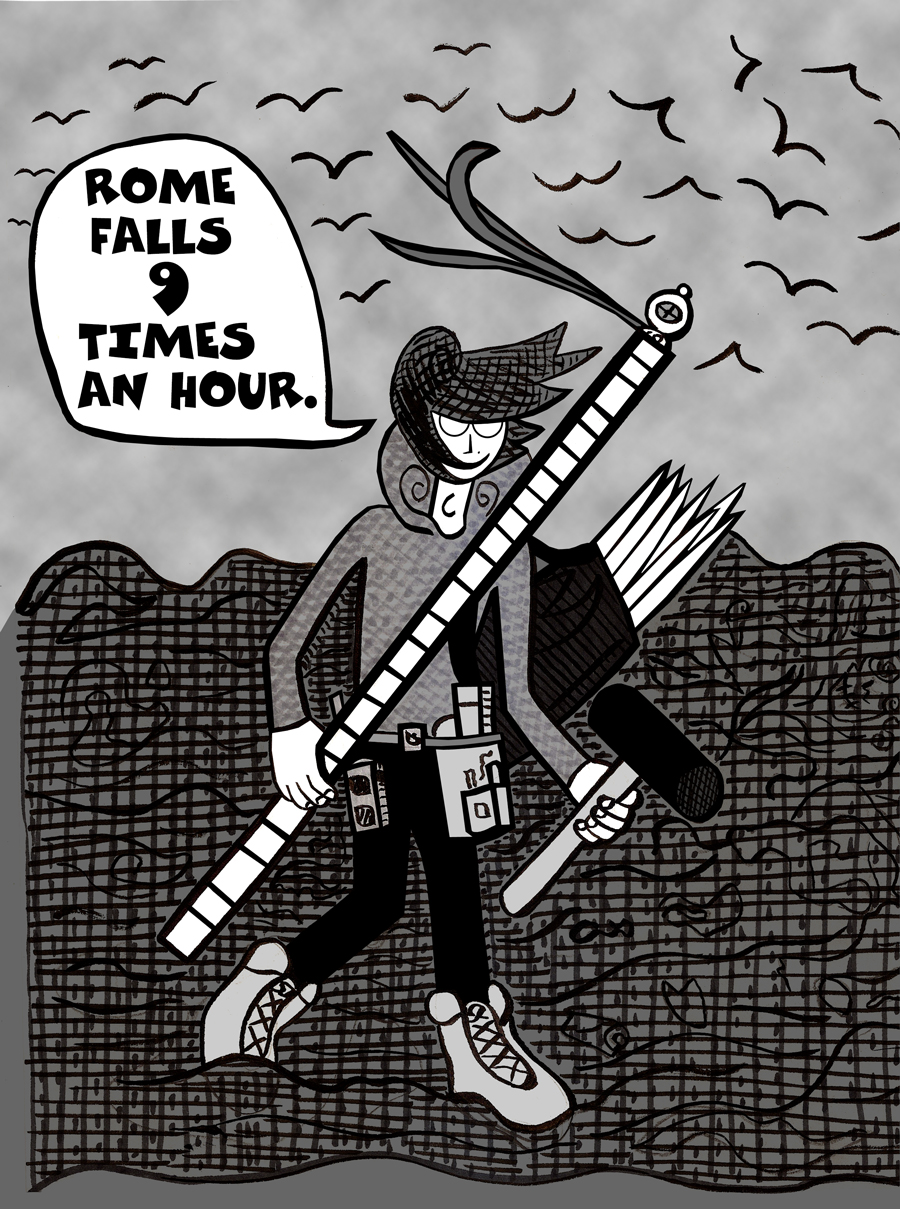
I was once asked to explain the meaning of this here scribble, w/ interesting results!
—————– Original Message —————–
From: Bobby Campbell
Date: Jun 26, 2007 1:53 PMHello J!
Cherry Island is a landfill where I often work in my job as a land surveyor. I’m outfitted there w/ the tools for to set fill limit grade stakes. By which the workers can determine how much more garbage a given area can house before reaching capacity.
The quote is from Terence Mckenna, re: his fractal spacetime model.
Have a Good’n!
bc
—————– Original Message —————–
From: J
Date: Jun 28, 2007 12:45 AMIsn’t that a 24″ gauge & a common gavel?
You a travelin man?
—————– Original Message —————–
From: Bobby Campbell
Date: Jun 28, 2007 11:28 PMFrom the west and traveling to the east, in search of light!
Actually I had never heard of any of that until I googled “24” gauge & common gavel” a minute ago. They’re really an extendable prism pole and a sledge hammer, but I see what you mean!
My first read through of Finnegans Wake was done mostly at Cherry Island, sitting in my work truck, amongst the trash heap landscape, which is wildly appropriate, as Terence McKenna explains, “I mean, Joyce is so dense with technical terms, brand names, pop references, localisms; the way to conceive of Finnegans Wake is like a midden, a garbage dump — and there is, in fact, a garbage dump in the Wake that figures very prominently.” – Surfing on Finnegans Wake
“Where in the waste is the wisdom?”
JJ, FW Pg. 114
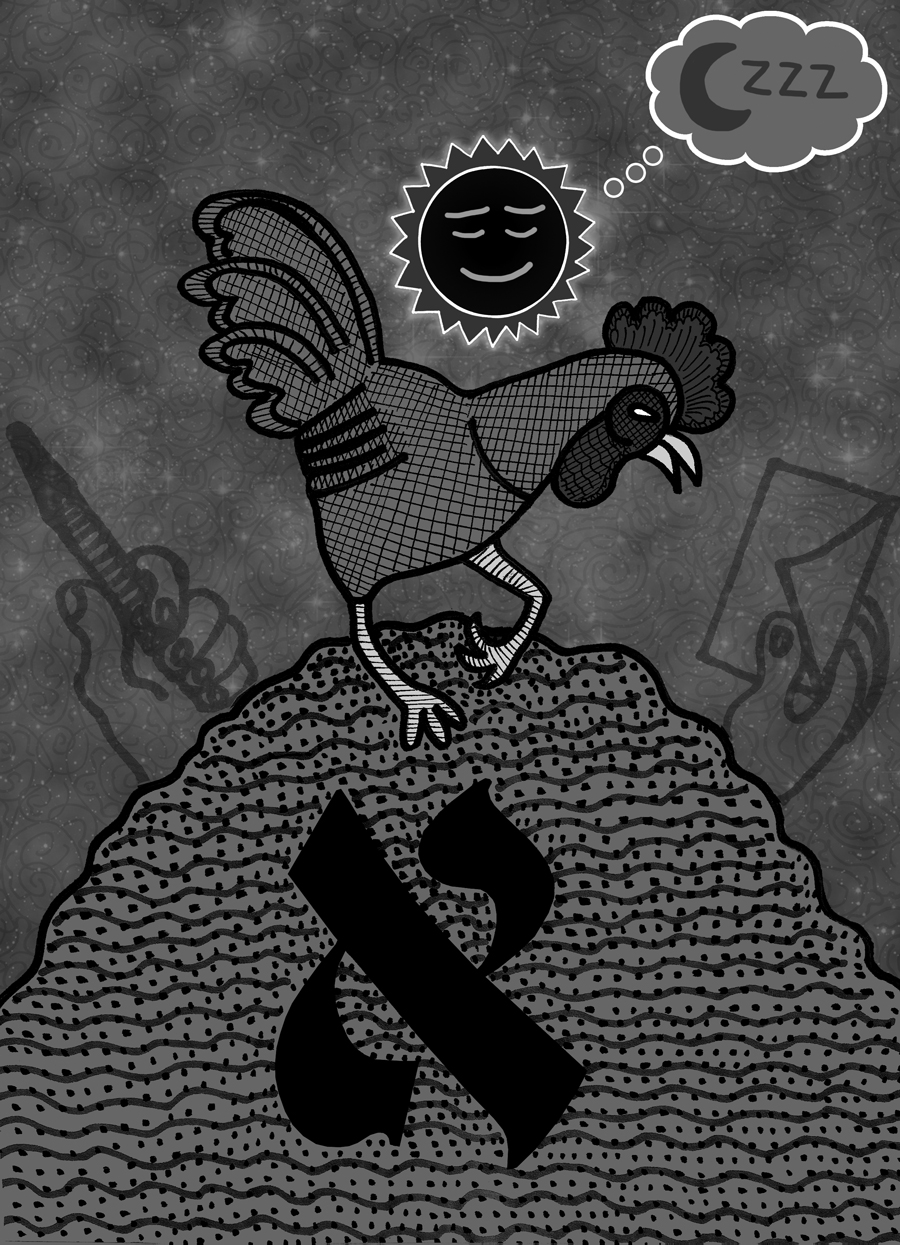
“The bird in the case was Belinda of the Dorans…and what she was scratching at the hour of klokking twelve looked for all this zogzag world like a goodish-sized sheet of letterpaper”
JJ, FW Pg. 111
A plot point in Finnegans Wake concerns a letter dictated by Anna Livia Plurabella to her son Shem the Penman, which may or may not exonerate Humphrey Chimpden Earwicker (her husband, his father) of the vague and ever changing crime(s) of which he is accused. The letter becomes lost, and then is unearthed by a hen named Belinda (sometimes called Biddy) in a garbage dump, and then taken by the other son, Shaun the Postman. It turns out that anywhere the letter would have spoken definitively on the character of HCE the hen’s beak has poked a hole in the paper.
That is at least one overly simplified way of reading one level of a small part of FW!
A bit of Joyce’s conceptual punning is illustrated above. Anna Livia Plurabelle’s character is identified through Finnegans Wake by the initials ALP, which is an abbreviation of Aleph. The first letter/number in the Hebrew alphabet/numerals. The search for Anna Livia Plurabella’s letter is in some ways a search for Aleph, the initial state.
All of which forms the background of an old comic strip of mine: BEACH/DUMP USA: A Drama of Comparisons (NSFW)
STEPHEN HERO
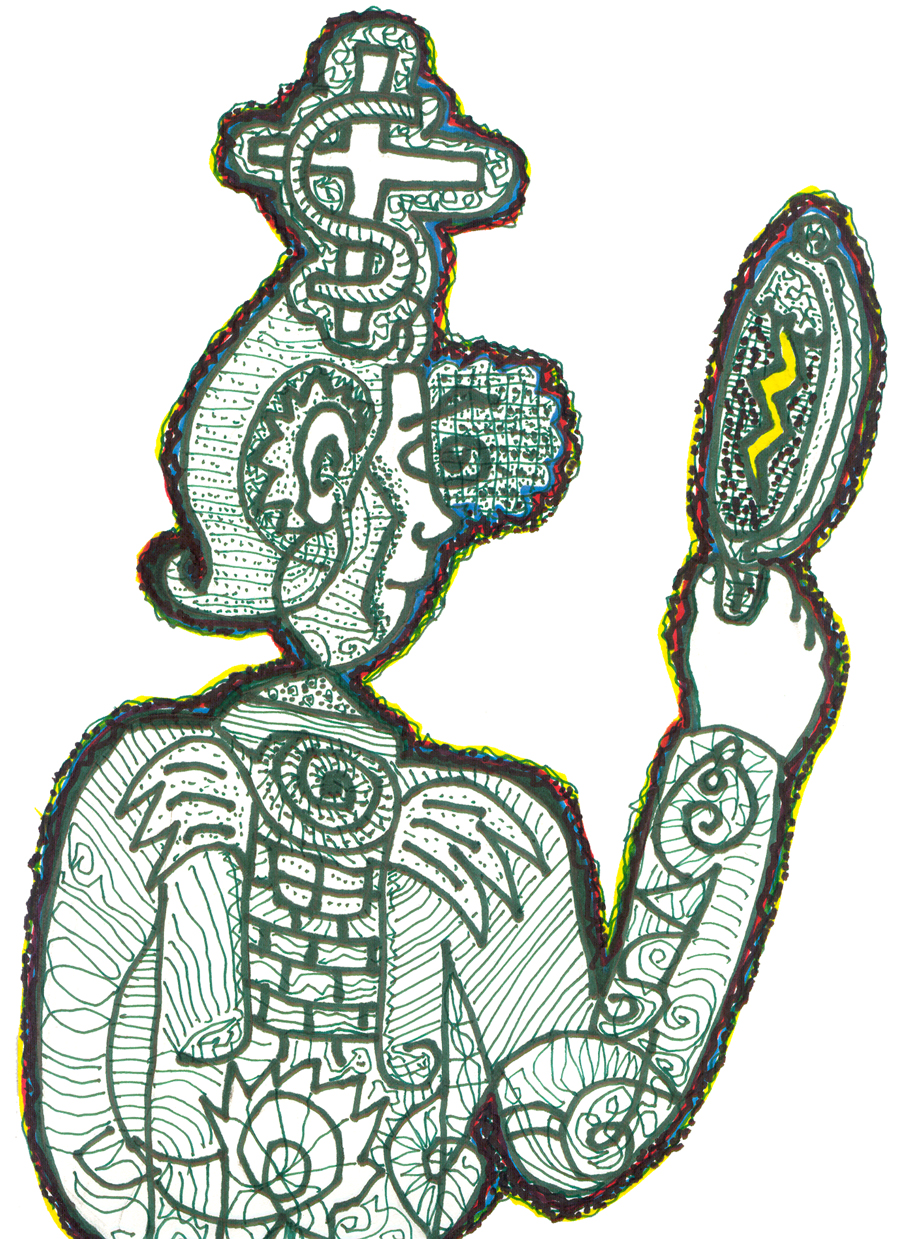
“It is a symbol of Irish art. The cracked looking-glass of a servant.”
– James Joyce, Ulysses, Chapter 1: Telemachus
